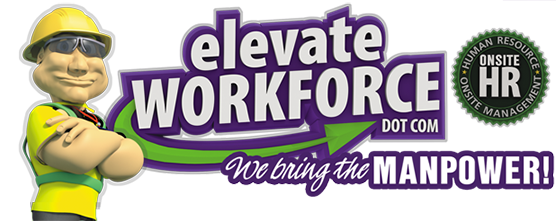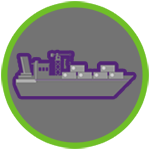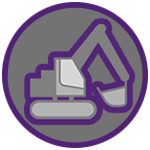
SAFTEY FIRST
Safety First: Building a Culture of Hazard Awareness
Safety is not just a checklist — it’s a culture. A truly effective safety and health program depends on a proactive, ongoing commitment to identifying and assessing potential hazards before they cause injuries, illnesses, or costly incidents.
By making hazard recognition part of everyday operations, organizations can protect workers, reduce downtime, and foster trust across all levels of the team.
The Two Pillars of Hazard Identification and Assessment
A strong hazard assessment program can be broken into two primary activities:
- Information Gathering and Inspections
Start by collecting and reviewing all available information about existing workplace hazards. This includes reviewing injury logs, safety data sheets, equipment manuals, and past inspection reports.
Once the baseline is established, conduct regular inspections to catch new or recurring risks. These inspections should be both scheduled and surprise-based to ensure that unsafe conditions are caught before they become incidents. 2. Incident Investigation and Root Cause Analysis
2. Incident Investigation and Root Cause Analysis
When an injury, illness, or near miss occurs, it’s essential to look beyond the surface. Don’t just document what happened — find out why it happened.
Identifying the root cause helps prevent recurrence, while analyzing patterns and trends across incidents can reveal deeper systemic issues.
The end goal? Prioritize corrective actions that have a long-term impact on worker safety.
Why Hazard Identification Must Be Continuous
Work environments are not static — they evolve.
Processes change, new tools are introduced, maintenance is deferred, or workspaces become cluttered. Each small shift can introduce new hazards that may go unnoticed until it’s too late.
In industries like construction, this challenge is amplified. The fast-paced nature of projects, shifting timelines, and dynamic work zones mean that hazards can appear overnight.  One day it’s a tripping hazard from scattered materials; the next, it’s a structural instability caused by schedule acceleration or unexpected weather.
One day it’s a tripping hazard from scattered materials; the next, it’s a structural instability caused by schedule acceleration or unexpected weather.
That’s why every safety program should emphasize continuous monitoring, communication, and training to stay ahead of potential risks.
Laying the Groundwork for a Safer Workplace
Although every organization’s process for hazard recognition may differ, several core practices can help establish a solid foundation:
- Engage Employees: Workers on the front line often spot hazards before management does. Encourage open reporting and recognize employees who contribute to safety improvements.

- Use Checklists and Technology: Digital tools and mobile inspection apps make it easier to track hazards, corrective actions, and inspection history.
- Follow Up Consistently: Identifying a hazard is only half the job — ensure timely corrective actions and verify their effectiveness.
- Review and Adapt: As your business or project grows, so should your safety procedures. Review your program regularly to ensure it evolves alongside your operations.
Final Thoughts
Safety isn’t a one-time project — it’s a living, breathing system. By creating a structured yet flexible approach to hazard identification and assessment, organizations can prevent injuries before they happen and build a true culture of accountability and care.
Because at the end of the day, when it comes to protecting people, there’s only one rule that matters:
Safety First. Always.


















